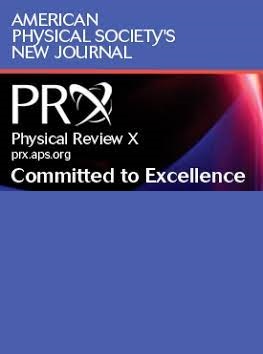调整电子量子位元与核磁振子的相干相互作用
IF 15.7
1区 物理与天体物理
Q1 PHYSICS, MULTIDISCIPLINARY
引用次数: 0
摘要
中心自旋量子比特与近端自旋集合的相干相互作用可用于设计纠缠集合态或多量子比特寄存器。要充分利用这一多体平台,需要调整中心自旋与其自旋寄存器之间的相互作用。砷化镓量子点提供了一个中心自旋系统的实现模型,在这个模型中,电子量子比特与 ∼104 核自旋的多个集合体相互作用。在这项工作中,我们展示了如何调整砷化镓量子点中电子量子比特与核多体系统之间的相互作用。砷化镓系统的均匀性使我们能够进行高精度和同位素选择性核边带光谱分析,从而揭示单核电子骑士场。结合核场的时间分辨光谱分析,可以全面描述电子-核相互作用的控制特征。算法反馈序列精确选择核极化,通过电子 g 因子各向异性调整电子-核交换相互作用。这样,我们就可以直接调整集体核激发(磁子)的激活率和电子四比特的相干时间。我们的方法适用于类似的中心自旋系统,并能在多体机制中对相干相互作用进行可编程调谐。 美国物理学会出版 2025本文章由计算机程序翻译,如有差异,请以英文原文为准。
Tuning the Coherent Interaction of an Electron Qubit and a Nuclear Magnon
A central spin qubit interacting coherently with an ensemble of proximal spins can be used to engineer entangled collective states or a multiqubit register. Making full use of this many-body platform requires tuning the interaction between the central spin and its spin register. GaAs quantum dots offer a model realization of the central spin system where an electron qubit interacts with multiple ensembles of ∼104 nuclear spins. In this work, we demonstrate tuning of the interaction between the electron qubit and the nuclear many-body system in a GaAs quantum dot. The homogeneity of the GaAs system allows us to perform high-precision and isotopically selective nuclear sideband spectroscopy, which reveals the single-nucleus electronic Knight field. Together with time-resolved spectroscopy of the nuclear field, this fully characterizes the electron-nuclear interaction for control. An algorithmic feedback sequence selects the nuclear polarization precisely, which adjusts the electron-nuclear exchange interaction via the electronic g Published by the American Physical Society 2025
求助全文
通过发布文献求助,成功后即可免费获取论文全文。
去求助
来源期刊

Physical Review X
PHYSICS, MULTIDISCIPLINARY-
CiteScore
24.60
自引率
1.60%
发文量
197
审稿时长
3 months
期刊介绍:
Physical Review X (PRX) stands as an exclusively online, fully open-access journal, emphasizing innovation, quality, and enduring impact in the scientific content it disseminates. Devoted to showcasing a curated selection of papers from pure, applied, and interdisciplinary physics, PRX aims to feature work with the potential to shape current and future research while leaving a lasting and profound impact in their respective fields. Encompassing the entire spectrum of physics subject areas, PRX places a special focus on groundbreaking interdisciplinary research with broad-reaching influence.
 求助内容:
求助内容: 应助结果提醒方式:
应助结果提醒方式:


